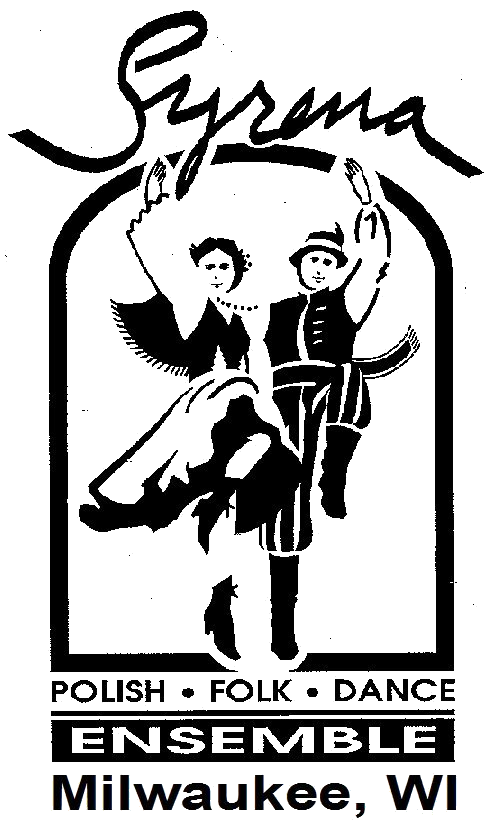Krakowiak
The Krakowiak is one of the most popular and characteristic Polish folk dances, with its very lively, even wild, tempo, and long, easy strides, demonstrating spirited abandon and elegance at the same time. The festival of Lajkonik celebrates an ancient legend where a Polish soldier disguised himself as a Tartar warrior to fool the townspeople of Krakow into believing the Tartars were victorious in battle. Once discovered as an imposter, the townspeople dance around Lajkonik in merry celebration.
History of Lajkonik and the Krakowski Costume
The famous old city of Krakow (Cracow) was once the capital of the Polish kings. It is an important cultural center with a well-known university, the Jagiellonian University, founded in 1364. The Castle of Wawel, built between the 10th the 14th century, was the royal palace. The dance krakowiak, which originated in the Krakow region, is one of the five Polish national dances, the other four being: polonez, mazur, kujawiak and oberek. It has many steps and figures.
The story of Lajkonik goes as follows. The year 1241 brought about the third siege on Krakow by the cruel Tatar armies from the east (Tartar descendants of Mongol conquerors from Asia). From the tower of the Church of Saint Mary the trumpeter of Krakow sounded his trumpet with the “hejnal” the hourly call of the city. Repeatedly he played the “hejnal,” warning the citizens that a great horde of Tatars was approaching, until an enemy arrow pierced his throat, interrupting the call. (The “hejnal” is still sounded In Krakow to this day and in commemoration of the brave hero’s deed, the trumpeter breaks off his song in the middle of a note.) The menfolk of the city, alerted by the call, went forth to meet the Tatar armies leaving behind frightened women and children. After a tense period of waiting, an army appeared, its leader dressed In the garb of the Tatar Khan, even to his turban, mace, sword, and horse. Despair turned to joy when the chieftain was recognized as the head of the Krakow detachment which had defeated the Tatars in battle.
To commemorate this victory, each spring this event is celebrated with dancing and merrymaking in the Market Place of Krakow. A disguised Tatar warrior with a hobbyhorse fastened to his waist, called in Polish “Lajkonik,” is prancing around, chasing people with his mace.
The Krakow costume is considered the Polish national attire and is the most well known. The pattern of the red and white striped material used for the man’s pants originated in ancient times. The metallic ringlets attached to the man’s leather belt come from armor. The tassels on the sleeveless coat, “kabat,” come from Napoleonic times, imitating military decorations. The outfit is topped with “rogatywka”, a four-cornered red hat, ornamented with ribbons and peacock feathers.
The woman’s Krakow costume was originally quite simple. It became embellished – as we know it today – during the Romantic era (19th century), when peasants finally acquired their own wealth. Its beauty is in its richly embroidered and beaded velvet vest and floral challis skirt. The fabric was first brought from the Far East and comes in various colors. A wreath of flowers is worn by a single woman, while the married woman wears a white kerchief. The first ribbon of the bunch attached to the right shoulder is a present from the godparents, the rest come from friends and admirers.
